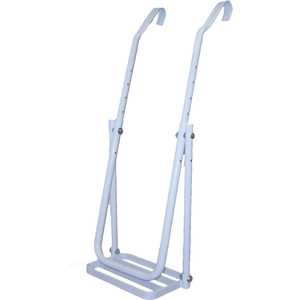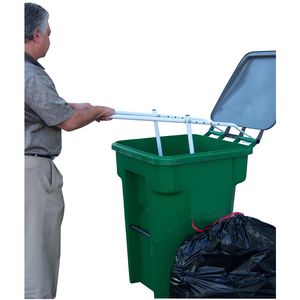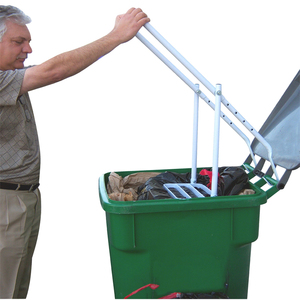
All categories
Featured selections
Trade Assurance
Buyer Central
Help Center
Get the app
Become a supplier

(94 products available)




















































Generally, there are two main types of trash compactor boxes used in residential and commercial settings: electric and manual trash compactors.
Electric trash compactor boxes
Electric compactor boxes are the most common type. They have a built-in trash compactor that can be switched on and off with the help of a foot pedal or an electrical switch. As waste is accumulated inside the box, the compactor plate moves downwards and compacts the waste. In many models, the compactor plate automatically reverses once it reaches the lowest point.
Power pack
The power pack provides electrical and hydraulic power to operate the compactor. It is usually mounted on the rear or side wall of the box and enclosed within a separate locker for safety purposes. Electric power packs are driven by AC motors ranging from 3 to 5 horsepower.
Wheeled trash compactor boxes
Wheeled compactor boxes are designed with sturdy wheels for easy movement and mobility throughout the premises. They provide a flexible waste solution, allowing users to relocate the box as needed to accommodate changing waste collection requirements or to access different areas for waste disposal. Additionally, the compactors may be equipped with safety features such as reverse beepers and horn sounds to alert bystanders during operation, ensuring a safe and efficient waste management process.
Some versions also come with a plate to lock the box in place, which is suitable for scenarios where the box will not need to be moved frequently.
Solar-powered trash compactor boxes
Solar compactor boxes derive their energy from solar panels, which convert sunlight into electrical energy. They are equipped with energy-efficient sensors to detect waste volume and compaction needs, and they may also feature wireless connectivity for remote monitoring and data transmission. These compactor boxes offer an environmentally friendly solution by reducing carbon footprints and minimizing energy consumption.
Some specifications related to trash compactor boxes are as follows:
Various types of maintenance practices are needed to ensure that the trash compactor box continues to work properly and efficiently. Avoid overloading the compactor box with trash. If overloading takes place, it may put undue pressure on the motor and hydraulic system, leading to resulting damage over time.
Lubrication is an essential maintenance requirement. The moving parts of the compactor box, such as the ram and joints, need to be regularly and properly lubricated so that smooth functioning can be ensured over time.
Regular cleaning of the trash compactor box is also necessary so that unpleasant odors, potential blockages, and hygiene issues can be avoided. Monitoring the hydraulic fluid of the compactor box is required periodically. This is important because the performance of the trash compactor box heavily relies on the hydraulic system.
Last but not least, whenever necessary, seek professional maintenance and servicing of the trash compactor box to ensure that it is working efficiently and smoothly.
Hospital
In a large hospital, waste bags are abundant every day due to patients. However, the bin can not hold that much volume, and there are high-occupancy facilities like cafeterias. A trash compactor can compress waste in trash compactor boxes and reduce its volume by more than three-quarters. This helps to reduce the number of waste bags entering the city every day and makes the hospital's waste management and disposal easier and more efficient.
Shopping mall
Compressors are also useful in shopping malls. In some shopping malls, customers are huge, and many food courts are there. Food waste is hard to handle as organic matter goes rotten easily and attracts pests. With a trash compactor box, the food waste can be compressed into compact blocks. Less food waste will take up valuable landfill space.
Another benefit of using a trash compactor in a shopping mall is the space it saves. A compacted trash box will occupy much less space than an uncompressed bin, allowing more boxes to be stored, and more bins might be set up to serve customers.
Construction site
Compactors are most often found on construction sites. Huge amounts of construction waste are generated on a daily basis in the process of building new structures and demolishing old ones. Heavy-duty trash compactor boxes are suitable for construction sites and can handle not only large volumes but also large solidities like wood, metal, and concrete. With a trash compactor, the volumes of construction waste are lessened, and the space taken up by uncompressed waste is reduced by a great deal.
Office building
A trash compactor box is also useful in everyday office life. Paper is the leading cause of landfill and office waste, and paper accounts for a large proportion of landfill and office waste. Pulp could be compressed into large bales that take up less space. Employees will have fewer trips to the landfill, and the entire office's waste management system will be more efficient.
Usage Requirements:
It is necessary to assess the usage requirements. Consider factors such as the type of waste, volume, frequency of compaction, and specific features required. Different industries have unique waste types and volumes. Evaluate if a stationary compactor box, which is fixed at a location, or a portable one, which can be moved, is more suitable. Determining usage needs will help select a compactor with appropriate features.
Power Source:
Consider the preferred power source: electric or hydraulic. Electric compactors are suitable for indoor use, while hydraulic ones offer stronger force and are better for outdoor settings. Evaluate the available power sources and choose the ideal power source for waste management needs.
Capacity:
Compactor box capacities are typically expressed in yardage. Select a capacity that aligns with waste generation and space limitations. Consider the dimensions of the compactor to ensure it will fit in the intended location.
Safety Features:
Ensure that the trash compactor box has crucial safety elements. These features include emergency stop buttons, interlocks, and safety signage. Interlocks make sure that the compactor won't function while the container is removed. Safety is paramount, so choose a compactor that prioritizes it.
User Guidelines:
Select a compactor that comes with easy-to-understand user guidelines. The guidelines should be written in plain language and illustrated with clear diagrams. This will enable users to operate the compactor effectively without requiring prior knowledge or training.
Maintenance and Service:
When selecting a trash compactor, also consider the maintenance and service offered. Ensure that the supplier provides adequate support for repairs and services. Additionally, the availability of replacement parts should be guaranteed to minimize downtime in case of technical issues.
Q1: What is the working principle of a trash compactor?
A1: The built-in crusher will break up the waste. After that, the ram moves forward and compacts the trash.
Q2: What are the benefits of using a trash compactor?
A2: A trash compactor can reduce the volume of waste products by up to 75%, saving storage space. It can also help businesses save waste disposal costs.
Q3: What are the risks of trash compactors?
A3: Improper use and maintenance may result in injuries and environmental hazards. Trash compactor boxes may contain batteries and fluorescent tubes, which should be classified as e-waste. Compacting hazardous materials may result in over-heating and chemical reactions.
Q4: How are trash compactor boxes maintained?
A4: Routine maintenance includes lubricating moving parts, checking hydraulic fluids, and cleaning sensors and controls. Meanwhile, critical compactor components such as filters, belts, and chains should be examined and repaired or replaced as needed.
Q5: What are the types of trash compactor boxes?
A5: Rear-load trash compactor boxes are compatible with rear-loading waste trucks. Front-load trash compactor boxes are used for front-loading waste services. On-call trash compactors are only collected upon request. Continuous-throat feeders allow waste to be continuously fed and processed. Standard containers are typically 10, 20, or 40 cubic yards in size.